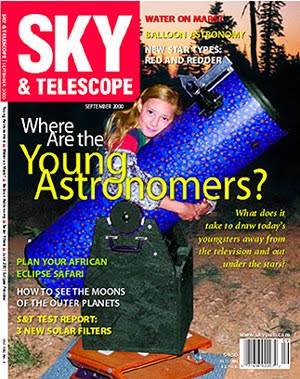The saying "Short and Sweet" certainly applies to this year's CalStar. The star party was cut a day short, first time in five years, by impending rain. But what took place while we were all there was great.
I was able to visit with friends from all over the state, some I get to see only at this event, others no more than twice a year. I had wonderful conversations about life and all its twists and turns with Jane Smith, Even Garber, Marsha Robinson, Richard Navarrete and Jeff Gortatowski. I spent most of my time observing with several in that group. What a great way to build friendships, and keep those that are long term.
Thursday afternoon was hot, Friday cooler but not by much. The evenings were all cool but comfortable. Thursday evening was the best observing in terms of consistency, Friday also quite good but with some bands of clouds swinging through.
I'll list some favorite observations, but first, I want to thank Mike Koop and Rob Hawley for the fine job they did finishing up all the arrangements for CalStar this year. One other item, it was great to see Paul Sterngold for the first time in years, good talk about life, Paul - thanks!
My favorite observations were nearly all using my 18" Obsession f/4.5 Dob, and magnifications that included 100X, 186X, 283X and 568X.
NGC 281 is the PacMan Nebula. Fun object - nice small open cluster with several bright components, and around it a large haze of nebula that has a prominent dark intrusion - giving it that "PacMan open mouth" look - extending in toward the brightest star in the cluster. I liked the view best with the DGM VHT filter.
NGC 6946 - always a fun object, but even more so as we could easily identify the supernova.
NGC 147 - a local group galaxy - large and diffuse - but the view through the 30" Starmaster Dob of the brightest globular (Hodge 3) in the galaxy was a trip. Dim, but definitely there. Thanks to David Kingsley and Brian Zehring (sp?) for the view. Here's the Adventures In Deep Space web-page showing it:
http://www.angelfire.com/id/jsredshift/gcextra.htm
IC 1613 is another local group dwarf galaxy - and with matching star patterns between the eyepiece and computer screen, I would detect some brightening and perhaps some HII regions (???).
We (doing group observing) also ran through several open clusters in Cassiopeia. Started with NGC 7789, one that everyone loves, then progressed to a nice chain including NGC 7788, NGC 7790, King 12, Berkeley 58 and Harvard 21 (there was one more - began with an "F" but not in my notes). This was a fun and diverse group.
Jones 1 was a nice large annular planetary - easy to find. It showed best, again in the DGM filter. I had heard about this object for years and just never got around to chasing it down.
We did a few fun galaxy trios as well, from the Miles Paul "Atlas of Galaxy Trios" - NGC 6928 was prominent and obvious, NGC 6930 dimmer but easily found next to a pair of bright stars to its southeast, NGC 6927 was a challenge, and I can only wonder if anyone has found the fourth galaxy NGC 6927A - I guess not, otherwise it wouldn't be a trio!
The best view of the two nights was one stumbled upon accidentally (take note, goto users!) - when I was hunting for NGC 392 - part of another Miles Paul Galaxy Trio. Instead I landed on NGC 383. Looking at it I saw two galaxies to its south. I called someone over thinking it was the trio - until they asked about the two galaxies north of 383. I was puzzled. So I began studying the field. NGC 383 looking disturbed, as if it had two cores - so I went to higher power and found it to be two galaxies - NGC 382 was also there. Up to 283X and I began noticing other galaxies as well - NGC 366 and NGC 387 - which formed a nice chain with the others. I kept looking.... and soon NGC 375 popped in, then UGC 1679, out west of NGCs 383 and 382. These two popped in during a brief moment of great transparency and excellent seeing - there, then gone. The last one I found was NGC 388 southeast of the bright pair. What was rewarding about this was being able to see them, and only afterward going to the computer and confirming them position by position. The next day several of us were looking at Uranometria and other reference, and found that one of the appendix pages in the most recent Uranometria contained a blowup of the field. This group is described in "Adventures In Deep Space":
http://www.angelfire.com/id/jsredshift/ngc383ch.htm
Part of the Perseus - Pisces Supercluster - it is described as one of the largest known structures in the universe:
http://www.angelfire.com/id/jsredshift/supercl.htm
The observing was truly great...
It was somewhat sad, too, to pack up and leave on Saturday. Back to things that this trip proved such a good respite for... as well as the thought of winter approaching with less nights observing...
But, I do remember some spectacular nights out last winter. You just never know... some things, like this year's CalStar, really are short and sweet...






